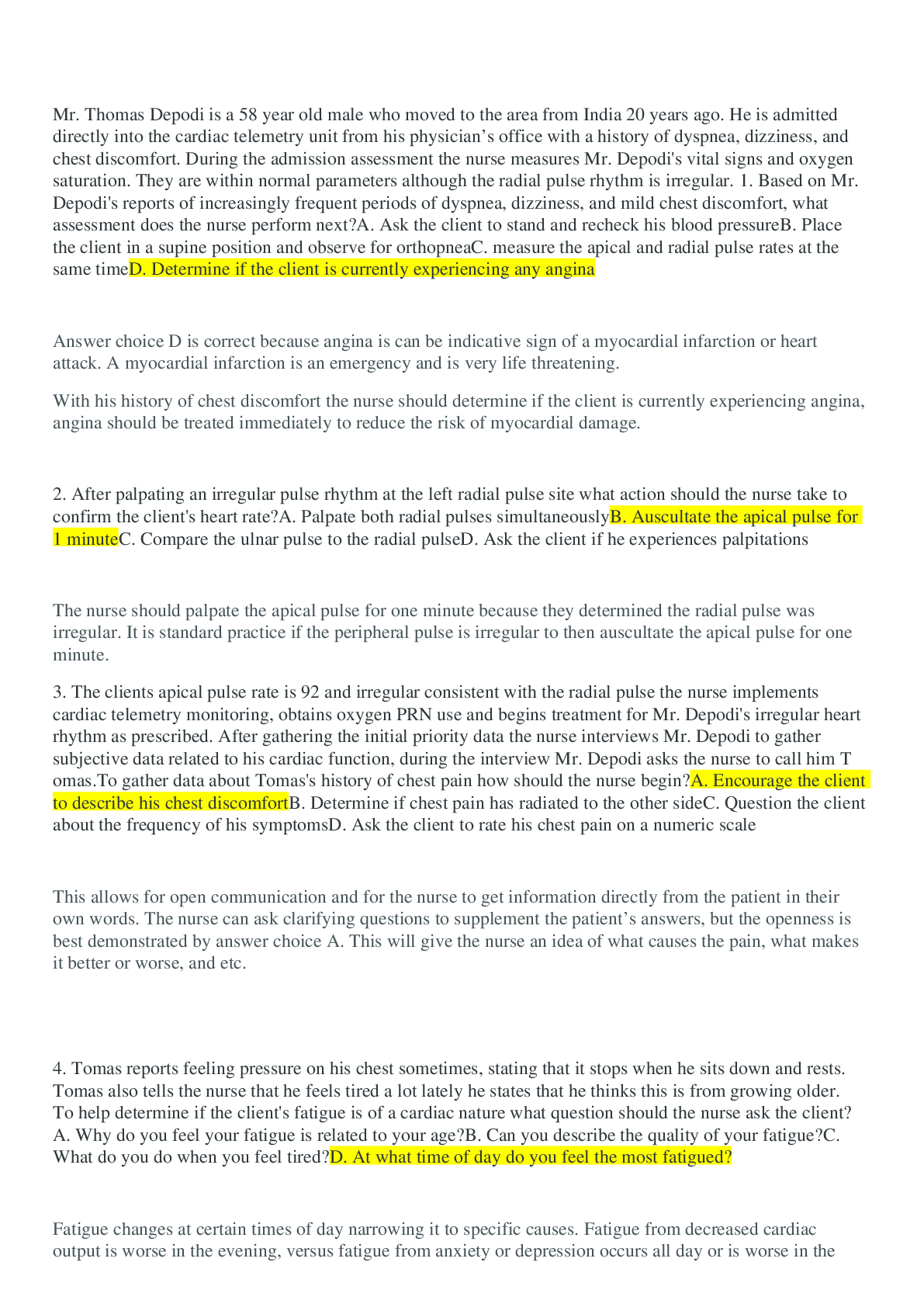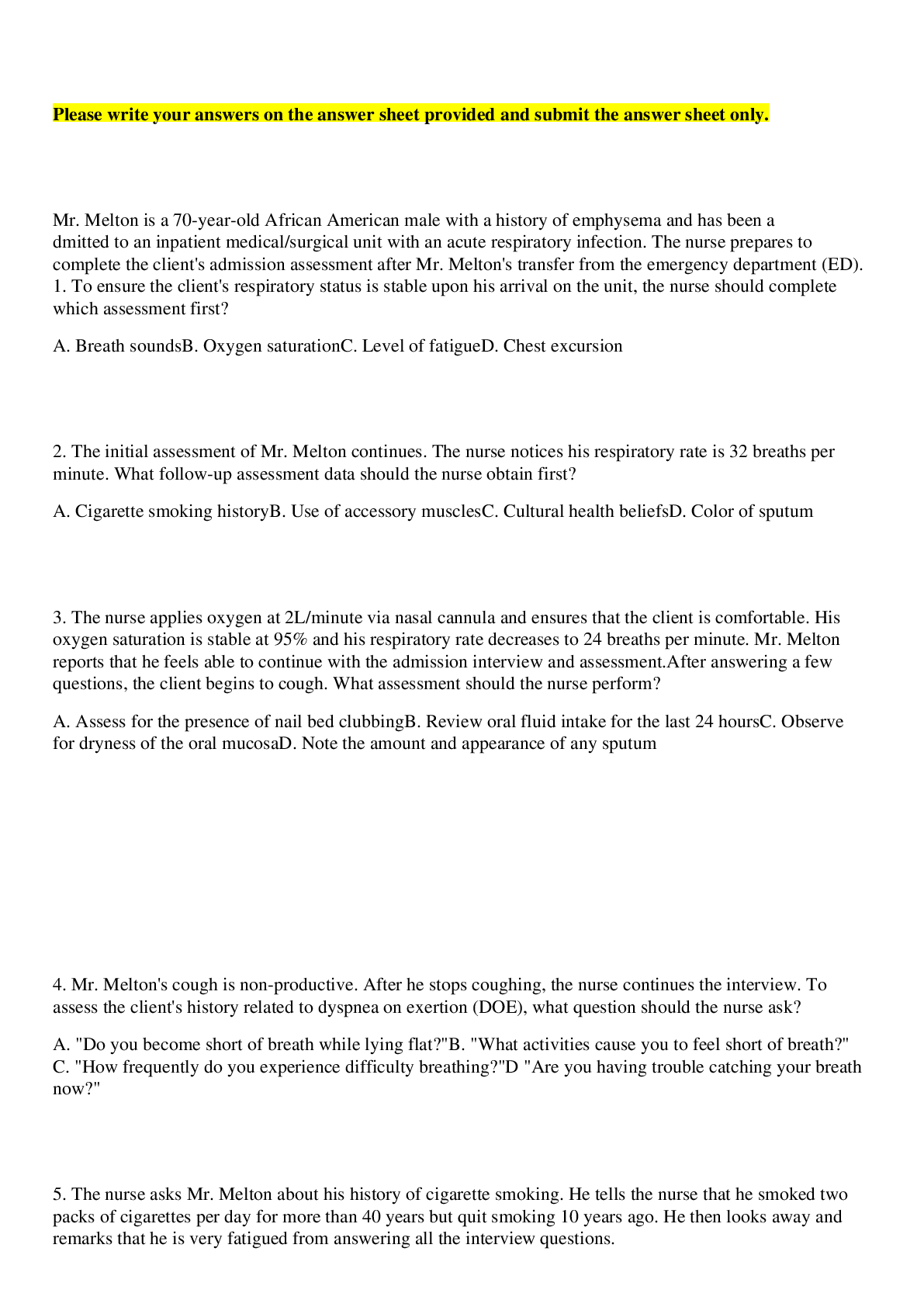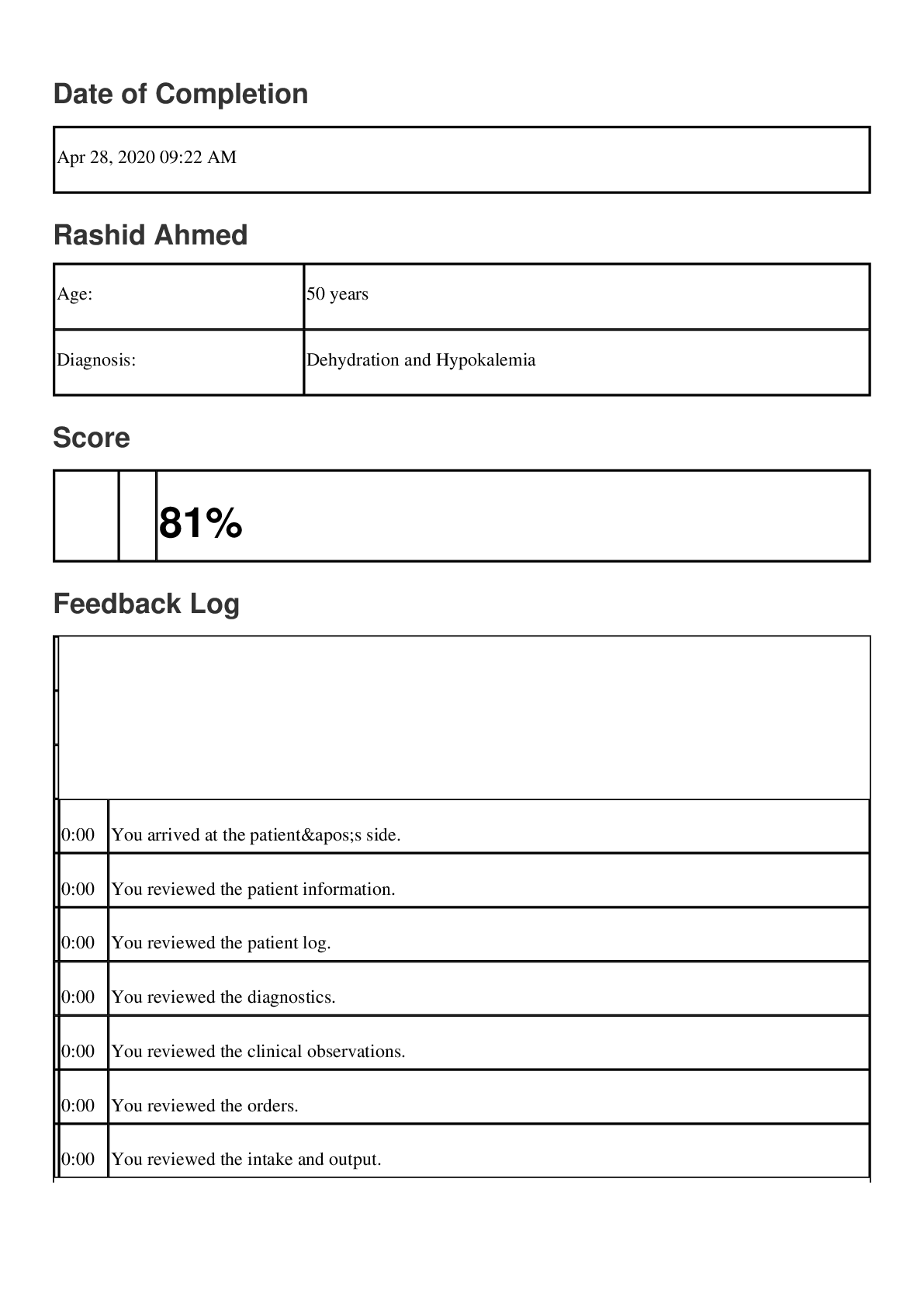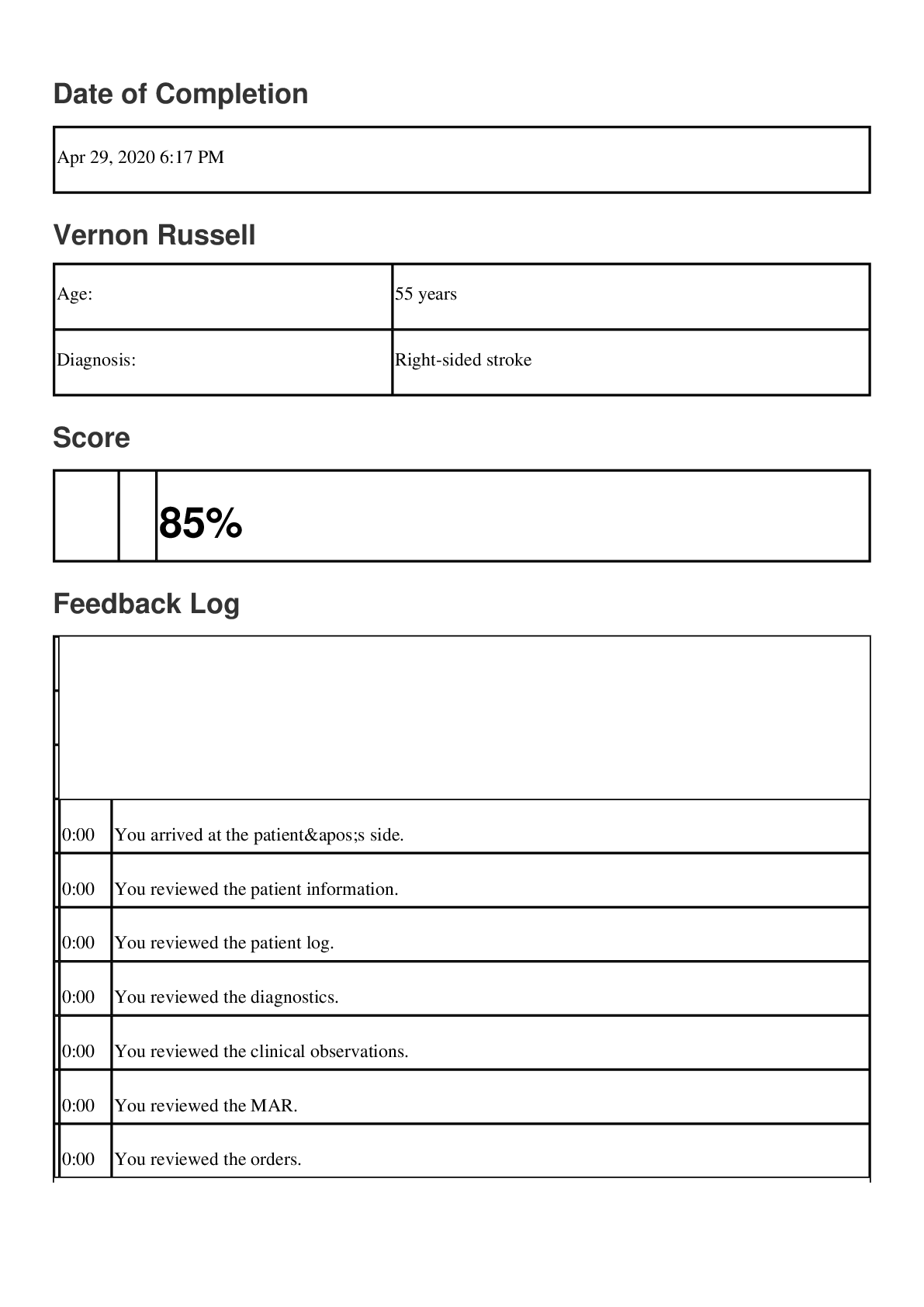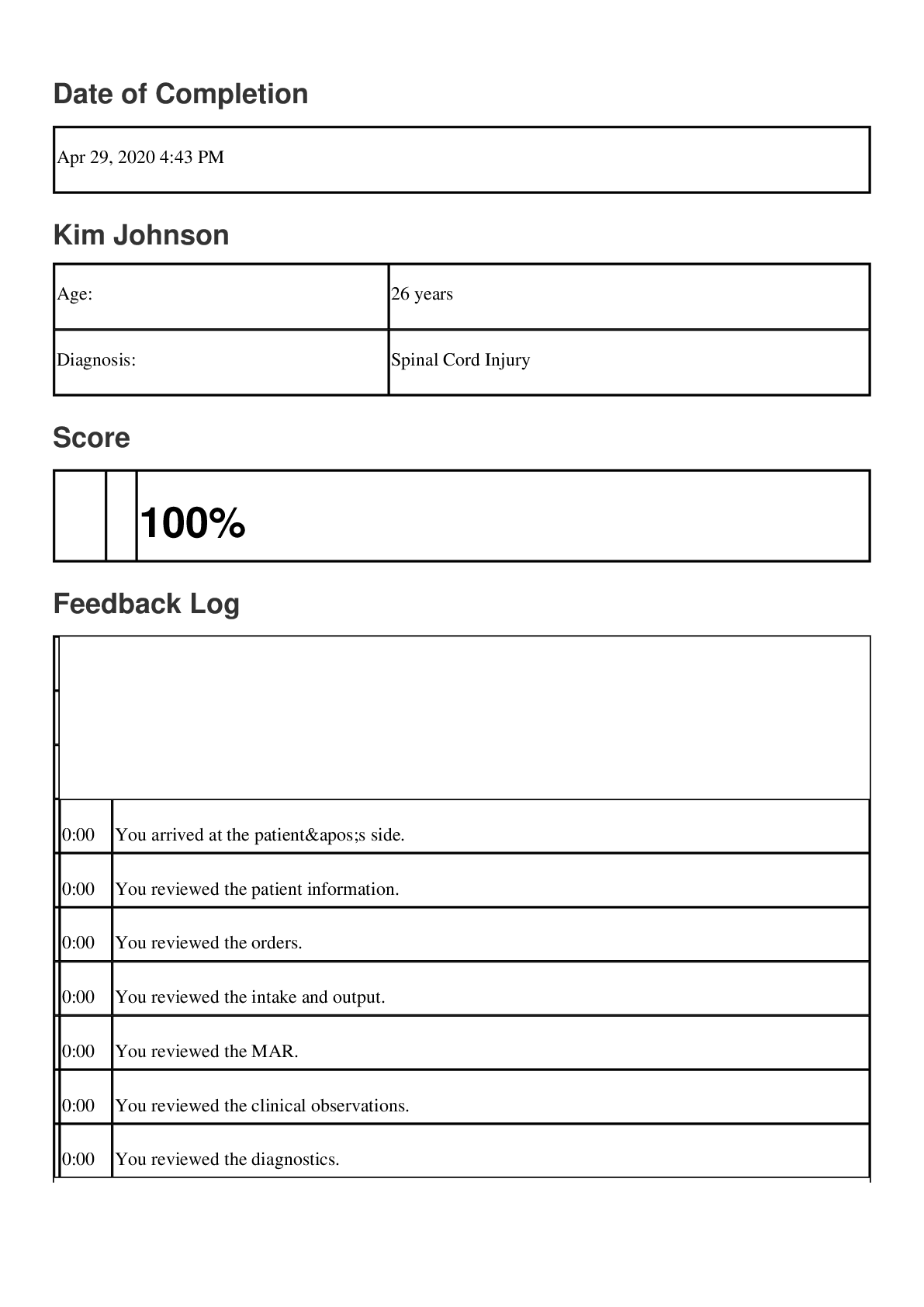*NURSING > CASE STUDY > NR 507 Week 3: Cardiovascular, Cellular, and Hematologic Disorders - Discussion Part Two (All)
NR 507 Week 3: Cardiovascular, Cellular, and Hematologic Disorders - Discussion Part Two
Document Content and Description Below
Week 3: Cardiovascular, Cellular, and Hematologic Disorders - Discussion Part Two Loading... This week's graded topics relate to the following Course Outcomes (COs). 1 Analyze pathophysiologic mech... anisms associated with selected disease states. (PO 1) 2 Differentiate the epidemiology, etiology, developmental considerations, pathogenesis, and clinical and laboratory manifestations of specific disease processes. (PO 1) 3 Examine the way in which homeostatic, adaptive, and compensatory physiological mechanisms can be supported and/or altered through specific therapeutic interventions. (PO 1, 7) 4 Distinguish risk factors associated with selected disease states. (PO 1) 5 Describe outcomes of disruptive or alterations in specific physiologic processes. (PO 1) 6 Distinguish risk factors associated with selected disease states. (PO 1) 7 Explore age-specific and developmental alterations in physiologic and disease states. (PO 1, 4) Discussion Discussion Part Two (graded) 0 Responses Lorna Durfee 5/16/2016 9:26:22 PM Discussion Part 2 Discussion Part Two (graded) Jesse is a 57-year-old male who presents with gradual onset of dyspnea on exertion and fatigue. He also complains of frequent dyspepsia with nausea and occasional epigastric pain. He states that at night he has trouble breathing especially while lying on his back. This is relieved by him sitting up. His vitals are 180/110, P = 88, T = 98.0 C, R = 20. Subjective: 57-year-old male who presents with gradual onset of dyspnea on exertion and fatigue. He also complains of frequent dyspepsia with nausea and occasional epigastric pain. The patient states that he has trouble breathing at night especially while lying on his back. This condition is relieved when he sits up. Objective: His vitals are 180/110, P = 88, T = 98.0 C, R = 20. Write a differential in this case and explain how each item in your differential fits and how it might not fit. Doctor Brown and Class: This patient, according to Gould and Dyer (2011) is exhibiting signs of paroxysmal nocturnal dyspnea and the presence of acute pulmonary edema. When sleeping, the patient has increased blood volume in the lungs leading to fluid in the alveoli. The fluid will interfere with diffusion of oxygen and therefore lung expansion (Gould & Dyer, 2011, p. 300). This condition leads to pulmonary edema and can be caused by left-sided heart failure. 0 0 DIFFERENTIAL: CONGESTIVE HEART FAILURE: Gould and Dyer (2011) state that congestive heart failure (CHF) occurs when the heart can no longer pump the necessary blood to meet all the demands of the body metabolically. Congestive heart failure can happen as a result of infarction or valve defect. It can arise from increased demands placed on the heart, such as hypertension or disease of the lung. One side of the heart fails first then the other. Infarction of the left ventricle or hypertension affects the left ventricle first. Pulmonary valve stenosis can affect the right ventricle. It is important to decipher which side it is. It is leftsided or right-sided CHF (Gould & Dyer, 2011, p. 297). There is a reduced flow of blood into the systemic circulation, and then the kidneys. These conditions lead to the secretion of increased renin and aldosterone. The result is vasoconstriction and an increased afterload and increased blood volume or preload which adds more work for the heart (Gould & Dyer, 2011, p. 298). The sympathetic nervous system then increases heart rate and peripheral resistance. There is a decrease in the efficiency of the heart. The heart change dilates, and the cardiac muscle then hypertrophies. The wall of the heart ventricle becomes thick. This condition leads to increased demand for blood supply to the myometrium. The myocardial cells die and are replaced with fibrous tissue (Gould & Dyer, 2011, p. 299). This item may fit: Dyspnea on exertion - Wahls (2012) relates that chemoreceptors in the brain and vascular system, as well as mechanoreceptors in the chest wall as well as the diaphragm and vagal receptors, regulate breathing. The cortical and cerebral pathways allow appraisal of the status of the lungs. When a patient has dyspnea it can be respiratory, neurogenic or cardiac in origin (Wahls, 2012, p. 173). Shortness of breath can be related to myocardial ischemia and congestive failure as well as COPD, lung disease and pneumonia and disorders that are psychogenic. He states that cardiac and pulmonary etiology dominates in most of the cas [Show More]
Last updated: 1 year ago
Preview 1 out of 23 pages
Instant download
.png)
Buy this document to get the full access instantly
Instant Download Access after purchase
Add to cartInstant download
Reviews( 0 )
Document information
Connected school, study & course
About the document
Uploaded On
Feb 18, 2021
Number of pages
23
Written in
Additional information
This document has been written for:
Uploaded
Feb 18, 2021
Downloads
0
Views
36

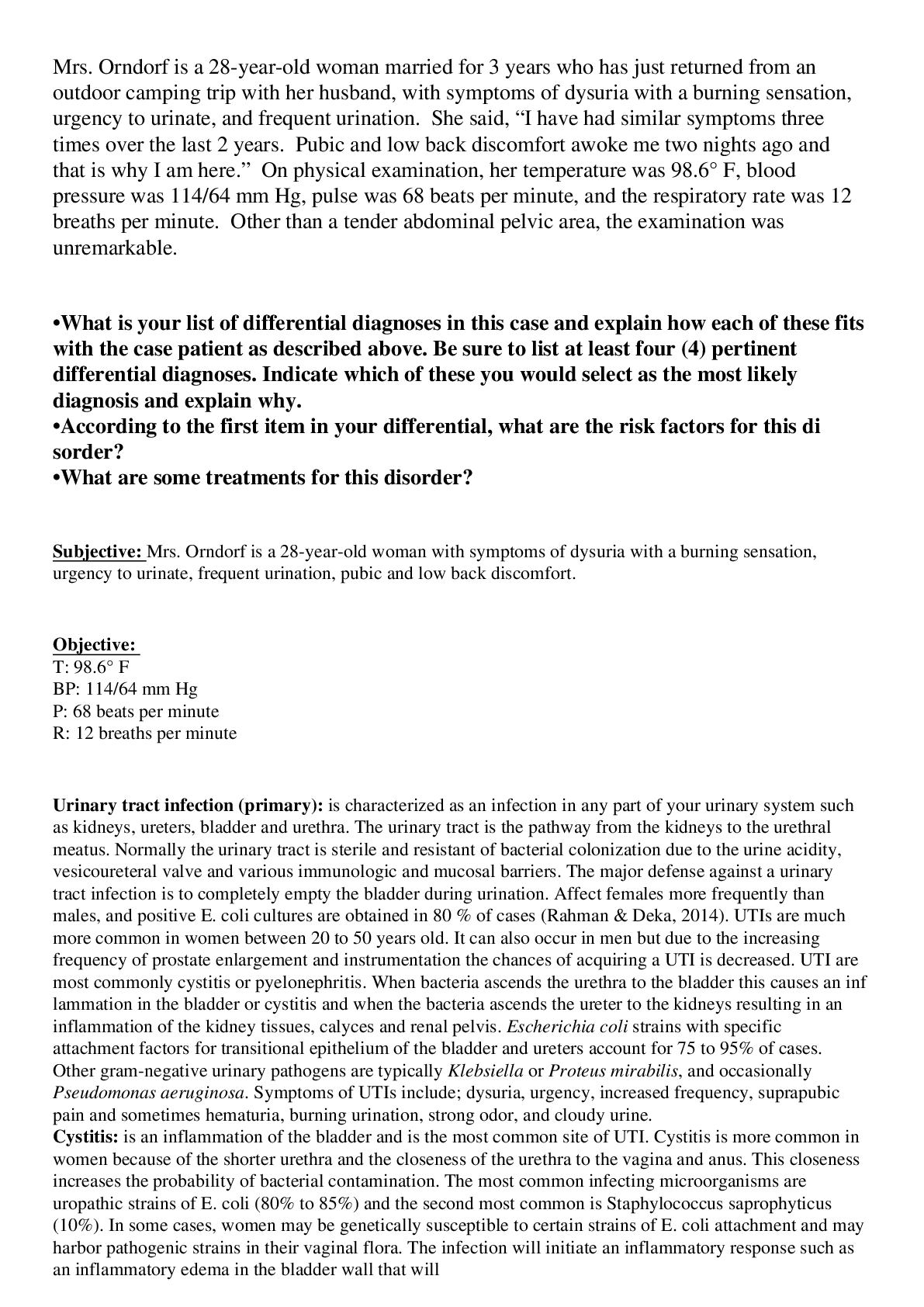
.png)
.png)
